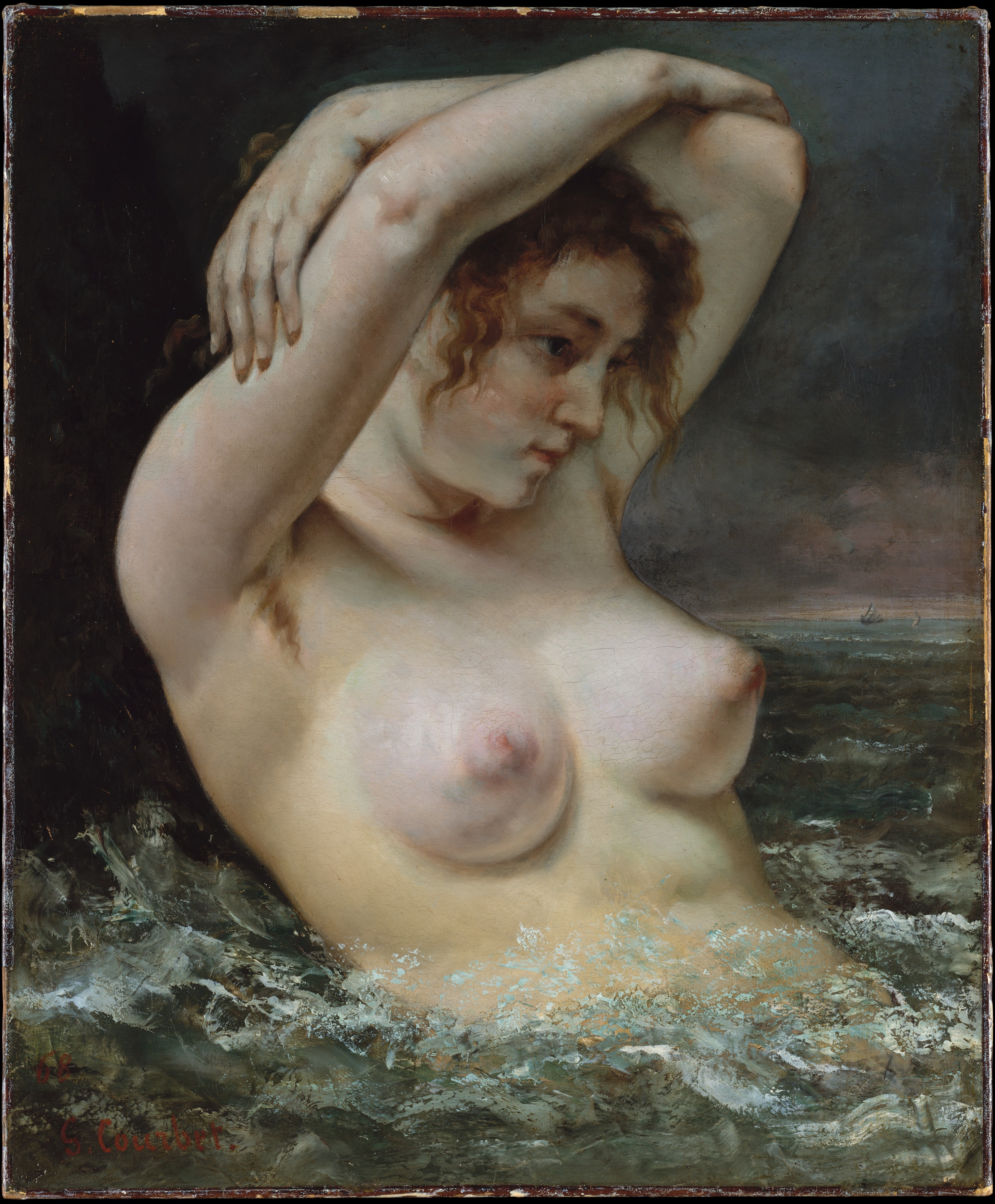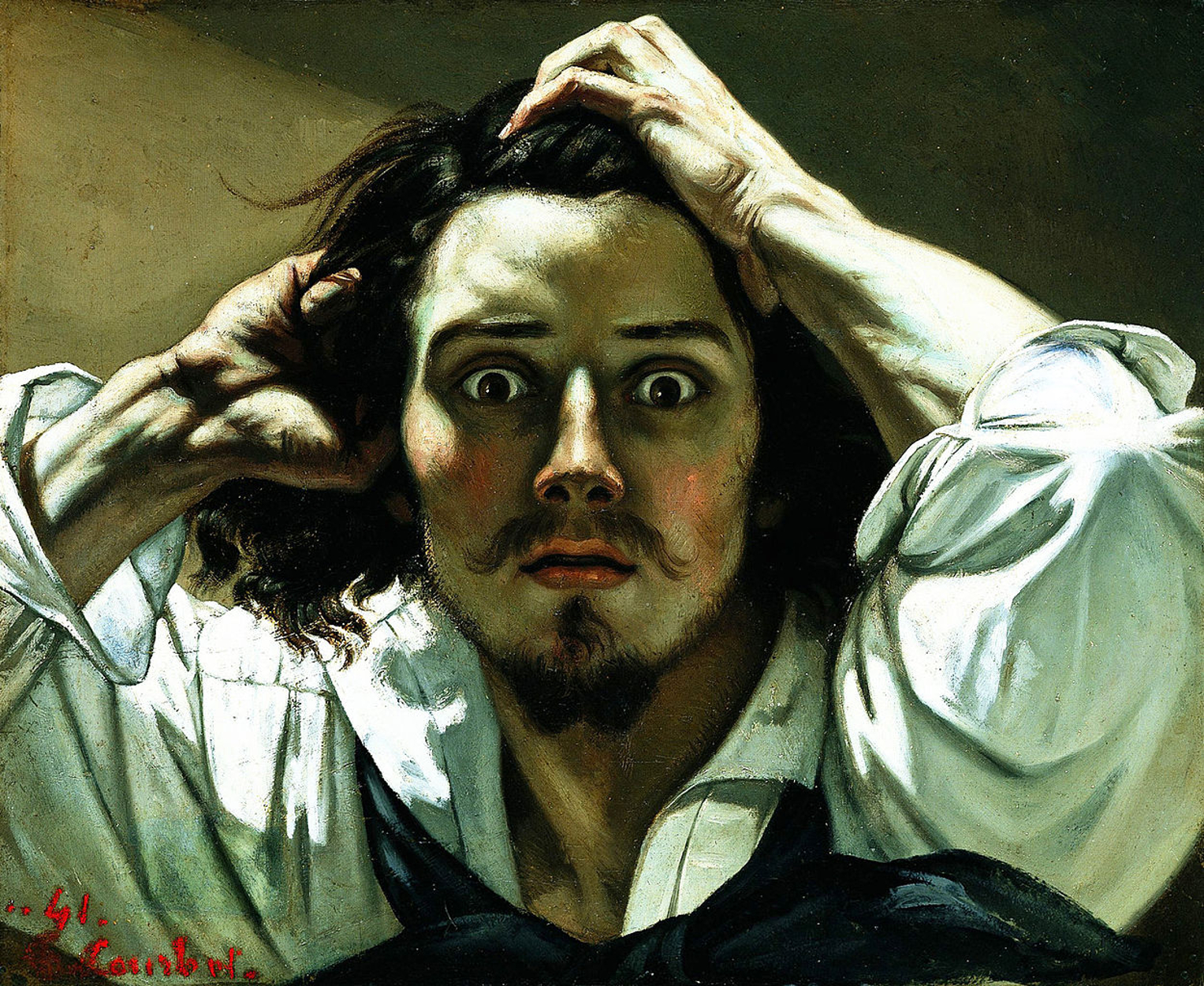Gustave Courbet was a French Realist painter from Ornans active in 19th century Paris. A Realist innovator, his work focused on figurative compositions, landscapes, and seascapes. He championed the pursuit of truth and believed it would erase social imbalances and inequities.
Typical of Courbet, The Woman in the Waves offers an alternative perspective to contemporary ideals of beauty and the representation of the female body. Alexandre Cabanel’s The Birth of Venus debuted at the Salon of 1863 and inspired a rash of similarly portrayed Venuses. The Woman in the Waves stands out from these and other traditional representations of feminine beauty through subtle subversions in the rendering of the woman. While he evokes the myth of Venus born of the sea, he sheds convention and depicts her with underarm hair and locks falling in her face. She is not glorified as a goddess or stylistic ideal, but as a woman with disheveled hair and fuzzy underarms. Notice that he calls her “woman” rather than “Venus.”
The Woman in the Waves is rendered truthfully. She’s honest, realistic, and even voyeuristic. She offers another, less-advocated perspective to the pantheon of feminine beauty and ideals.
- Pati


 Gustave Courbet
Gustave Courbet